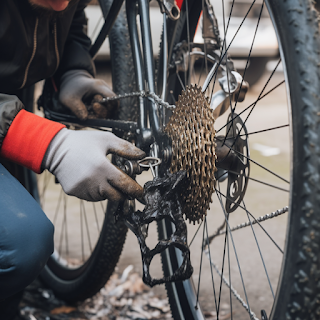Essential Bicycle Maintenance Tips Every Cyclist Should Know
Bicycle Maintenance Tips: What Every Cyclist Should Be Doing
I’ll admit it—bicycle maintenance isn’t something I’m always on top of. I tend to procrastinate, and when things finally squeak or slip, I get around to it. That said, I do what I can on my own and rely on my trusted local bike shop for anything more complicated, like cable replacement.
Here are three key maintenance tasks that every cyclist, even the procrastinators like me, should prioritize:
1. Cleaning Your Bicycle Chain: Why It Matters
I usually wait until my chain starts squeaking before I clean it—and I know that’s not ideal. But the truth is, a clean chain isn’t just quieter—it performs better and lasts longer.
Why clean your chain regularly?
A dirty chain reduces power transfer, increases wear on your drivetrain, and makes your ride harder than it needs to be. It also speeds up the breakdown of your cassette and chainrings.
How often should you clean it?
Every 100–200 miles is a good rule of thumb, or after rides in wet or dusty conditions.
What you’ll need:
-
Chain cleaner tool
-
Degreaser
-
Brush
-
Chain lubricant
Soak, scrub, rinse, dry, and lube. It doesn’t take long and pays off every time you pedal.
2. Replacing Your Bicycle Cables
This is where I bring in the pros. I’m not a mechanical expert, so when it comes to critical components like brake and gear cables, I let the local shop handle it.
Why replace cables?
Over time, cables stretch, corrode, and fray—leading to sluggish shifting or unreliable braking.
When to replace:
-
Every 1–2 years
-
If you notice slow shifting, soft braking, or visible damage
-
After a wet or muddy season
Even if you're not experiencing major issues, regular inspection and light lubrication help keep your ride safe and responsive.
3. How Often Should You Clean Your Entire Bike?
Here’s another confession: I let my bike get far too dirty before I clean it. Then, of course, it becomes a bigger job than it needed to be.
Why clean your bike regularly?
It prevents rust, keeps components running smoothly, and extends the life of your drivetrain, brakes, and bearings.
How often should you clean it?
-
After every ride in bad weather or dirt
-
Once a week for frequent riders
-
Monthly if conditions are clean and dry
Quick cleaning steps:
-
Rinse off mud and debris
-
Use soapy water and a brush for the frame, drivetrain, and components
-
Dry thoroughly and re-lubricate the chain and moving parts
Final Thoughts
Whether you're a hands-on mechanic or someone like me who relies on the bike shop for the tough stuff, regular maintenance is essential. By keeping your chain clean, replacing cables when needed, and washing your bike regularly, you’ll ride smoother, safer, and save money in the long run.



Comments
Post a Comment